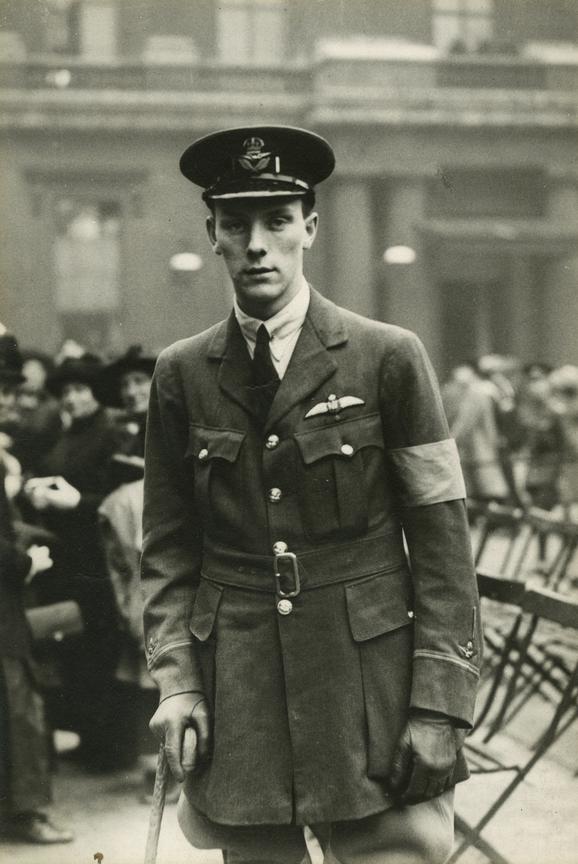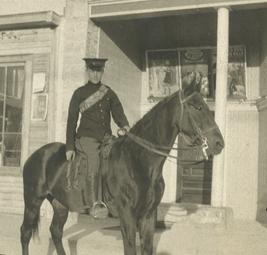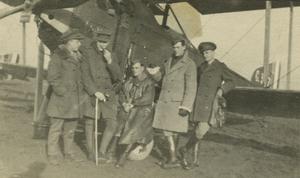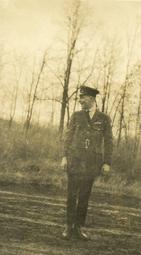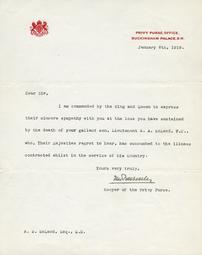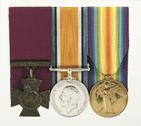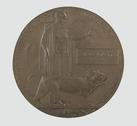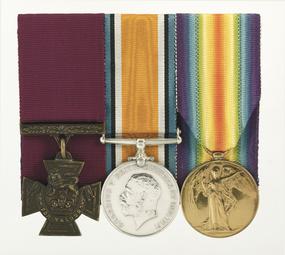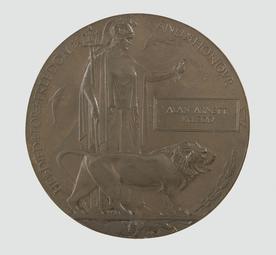Unit
No. 2 Squadron
Branch
Service Component
Royal Air Force
Service Number
birth
1899/04/20
Stonewall, Manitoba, Canada
death
1918/11/06
Winnipeg, Manitoba, Canada
grave
Kildonan Presbyterian Cemetery, Kildonan, Greater Winnipeg, Manitoba
Gender
Male
Alan Arnett McLeod was born in Stonewall, Manitoba, on 20 April 1899. He was the son of Dr. A. N. and Margaret Lillian McLeod.
McLeod enlisted in the 34th Fort Garry Horse in Winnipeg, Manitoba, in 1913, when he was 14 years old. At the start of the war, he was discharged as too young to serve. After repeated attempts to join the army, McLeod successfully enlisted in the Royal Flying Corps (RFC) in 1917, when he was 18 years old. McLeod trained at the RFC flight school at Long Branch, Ontario. After completing his course, he was transferred to Camp Borden, Ontario, for intermediate pilot training. He graduated as a second lieutenant, receiving his pilot wings with 50 hours of flying experience. McLeod left for England in August 1917, arriving in London the following month. He initially served in No. 51 Squadron on Home Defence duties and was then posted to No. 2 Squadron in northern France. He flew his first operation in December 1917.
On 27 March 1918, McLeod’s Armstrong Whitworth F.K.8 biplane was severely damaged in a fight with German aircraft. Injured, McLeod crash-landed the burning aircraft. He dragged the aircraft’s wounded observer, Arthur Hammond, to the relative safety of a shell hole. McLeod was later awarded the Victoria Cross for his actions. At the time, 18-year-old McLeod was the youngest Canadian to be awarded the Victoria Cross (Newfoundland did not join Canada until 1949). He died from influenza in Winnipeg, Manitoba, while recuperating from his wounds.
Alan Arnett McLeod is buried in Kildonan Presbyterian Cemetery, Kildonan, Greater Winnipeg, Manitoba.
Victoria Cross
“Whilst flying with his observer (Lt. A. W. Hammond, M.C.), attacking hostile formations by bombs and machine-gun fire, he was assailed at a height of 5,000 feet by eight enemy triplanes, which dived at him from all directions, firing from their front guns. By skilful manoeuvring he enabled his observer to fire bursts at each machine in turn, shooting three of them down out of control. By this time Lt. McLeod had received five wounds, and whilst continuing the engagement a bullet penetrated his petrol tank and set the machine on fire. He then climbed out on to the left bottom plane, controlling his machine from the side of the fuselage, and by side-slipping steeply kept the flames to one side, thus enabling the observer to continue firing until the ground was reached. The observer had been wounded six times when the machine crashed in "No Man’s Land," and 2nd Lt. McLeod, not withstanding his own wounds, dragged him away from the burning wreckage at great personal risk from heavy machine-gun fire from the enemy’s lines. This very gallant pilot was again wounded by a bomb whilst engaged in this act of rescue, but he persevered until he had placed Lt. Hammond in comparative safety, before falling himself from exhaustion and loss of blood.”
– London Gazette, 30 April 1918, Issue 30663

